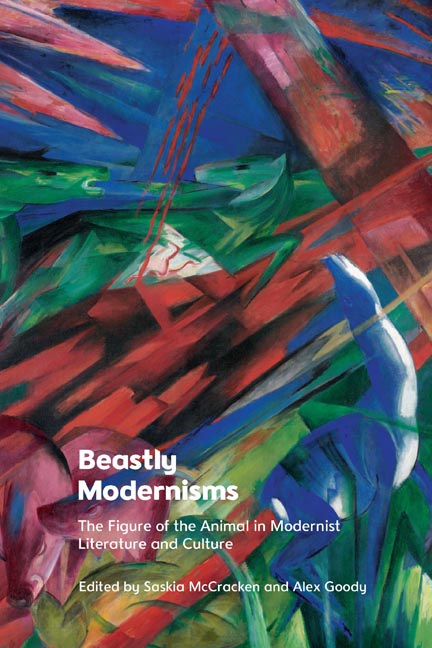Book contents
11 - Encountering Female Human Animal Becomings in Leonora Carrington’s Surrealist Hybrid Tales
Published online by Cambridge University Press: 21 October 2023
Summary
Surrealist Leonora Carrington’s proclamation that she was born a ‘female human animal’ (Carrington 1998a: 372) situates her as an artist and author who identified as a hybrid, bringing her into conversation with a posthuman and feminist politics. In her essay ‘What is a Woman?’ (1970), Carrington intimates that her human–animal positioning is not mere aesthetic choice but rather an ontological state, a political manoeuvre that disrupts humanism’s normative models of the Vitruvian white man. It signposts a call to action aimed at women in order to forge an alliance with the natural world against what she perceives as patriarchal ‘Masters’ (Carrington 1998a: 375).
Carrington’s remedy for an imminent apocalypse induced by a tyrannical male anthropos demands adopting a multiplicity of perspectives and ontologies for her proposed hybrid and ‘humanoid female’ (Carrington 1998a: 373):
The idea that ‘Our Masters’ are Right and must be loved, honoured and obeyed is, I think, one of the most destructive lies that have been instilled into the female psyche. It has become most horribly obvious what these Masters have done to our planet and her organic life. If women remain passive I think there is very little hope for the survival of life on this Earth. (Carrington 1998a: 375)
Carrington’s call to action provokes both a politics of transgression and a rebellion in her attack upon the ‘destructive lies’ of ‘Our Masters’. Moreover, she catalyses a dynamic that requires alliance and sympoiesis, where she suggests that women and ‘organic life’ are kin that must come together to ensure ‘the survival of life’. As I argue in this chapter, the politics exhibited in ‘What is a Woman?’ aptly introduce the hybrid human–animal themes of Carrington’s short stories – laying the ground for characters who embody such transgressions and alliances in a manner that anticipates a posthuman approach. Crucially, I posit that Carrington employs the human–animal hybrid figure as a feminist catalyst for change: one which transgresses and subverts the ‘passive’ position that she critiques in a manner that demonstrates a strategy in confronting ecological crisis, whilst at the same time forging a feminist politics that contributes to contemporary environmental debates.
- Type
- Chapter
- Information
- Beastly ModernismsThe Figure of the Animal in Modernist Literature and Culture, pp. 199 - 214Publisher: Edinburgh University PressPrint publication year: 2023



